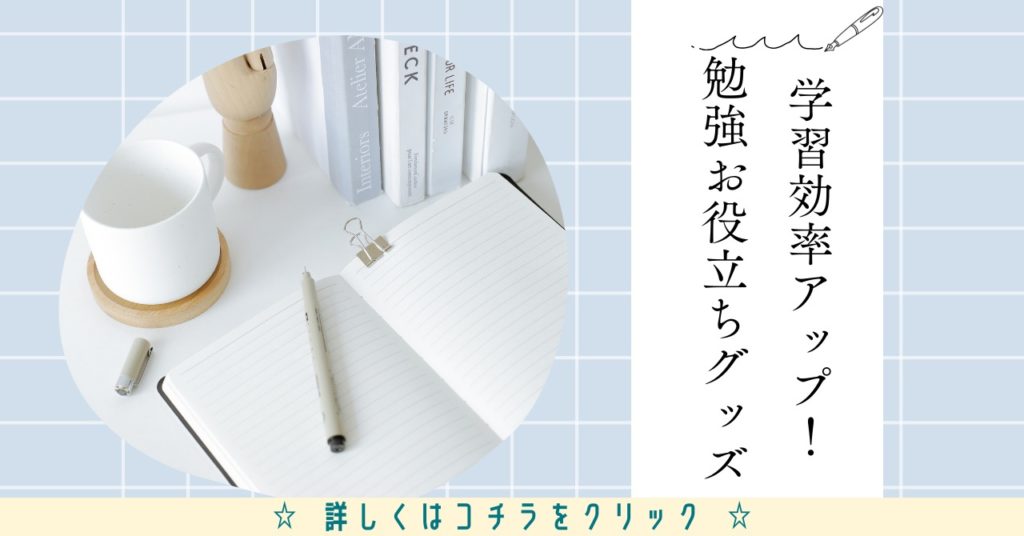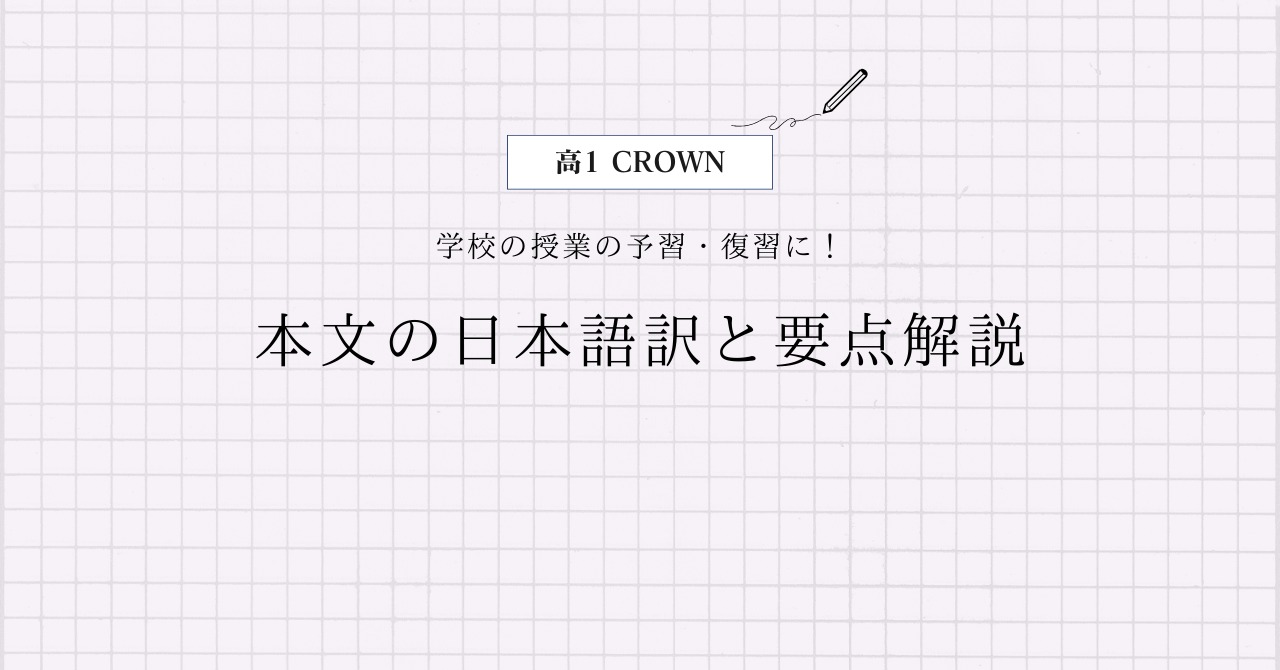三省堂 高1CROWN English Communication1 Lesson10 Section2の本文の日本語訳と重要箇所の解説です。
Section10-1, 10-3, 10-4, 10-5の解説はこちらからご覧ください。
>高1CROWN English Communication1 Lesson10 Section1 本文和訳
>高1CROWN English Communication1 Lesson10 Section3 本文和訳
>高1CROWN English Communication1 Lesson10 Section4 本文和訳
>高1CROWN English Communication1 Lesson10 Section5 本文和訳
- CROWN English Communication1 Lesson10 Section2 本文と日本語訳
- CROWN English Communication1 Lesson10 Section2 重要事項の解説
- It is Father’s Day and Charlie Brown and his friend Violet are talking about their fathers.
- Violet says that her father is richer than Charlie Brown’s dad, and that he is better at sports.
- Charlie Brown has little to say.
- He just asks Violet to come with him to his father’s barbershop.
- He tells her that no matter how busy his father is, he always has time to give him a big smile because he likes him.
- Violet has nothing more to say.
- She simply walks away.
- Her father’s money and athletic ability cannot compete with a father’s simple love for his son.
- Many Peanuts episodes would focus on such heart-warming aspects of family life.
- Charles M. Schulz, the cartoonist who created Peanuts, would put people and incidents from his childhood into his cartoons.
- And this may be part of the reason why the Peanuts cartoons are so popular among people all over the world.
- CROWN English Communication1 Lesson10 Section2 まとめ
CROWN English Communication1 Lesson10 Section2 本文と日本語訳
It is Father’s Day and Charlie Brown and his friend Violet are talking about their fathers.
「父の日に、チャーリー・ブラウンと彼の友達のバイオレットはお父さんについて話しています。」
Violet says that her father is richer than Charlie Brown’s dad, and that he is better at sports.
「バイオレットは、自分のお父さんはチャーリー・ブラウンのお父さんよりもお金持ちで、スポーツも得意だと言います。」
Charlie Brown has little to say.
「チャーリー・ブラウンは多くを語りません。」
He just asks Violet to come with him to his father’s barbershop.
「彼はバイオレットに、自分のお父さんの理髪店に一緒に来るようにとだけ頼みます。」
He tells her that no matter how busy his father is, he always has time to give him a big smile because he likes him.
「彼は、お父さんはどれだけ忙しくても、自分のことが好きだから、いつも自分に満面の笑みを向ける時間を作ってくれると彼女に言います。」
Violet has nothing more to say.
「バイオレットはもう何も言うことがありません。」
She simply walks away.
「彼女はただ去っていきます。」
Her father’s money and athletic ability cannot compete with a father’s simple love for his son.
「彼女のお父さんのお金と運動能力は、息子に対するシンプルな父親の愛情と張り合うことができません。」
Many Peanuts episodes would focus on such heart-warming aspects of family life.
「多くのピーナッツのエピソードは、そのような家族生活の心温まる側面に焦点をしようとしていました。」
Charles M. Schulz, the cartoonist who created Peanuts, would put people and incidents from his childhood into his cartoons.
「ピーナッツを生み出した漫画家のチャールズ・モンロー・シュルツは、彼の幼少期の人々や出来事を漫画の中に組み込もうとしていました。」
And this may be part of the reason why the Peanuts cartoons are so popular among people all over the world.
「そしてこのことが、漫画ピーナッツが世界中の人々の間でとても人気になっている理由の一部なのかもしれません。」

CROWN English Communication1 Lesson10 Section2 重要事項の解説
It is Father’s Day and Charlie Brown and his friend Violet are talking about their fathers.
“Father’s Day“は「父の日」ですね。
この文は「現在進行形」になっていて、“talk about~”は「~について話す」という意味で、“their”は“Charlie Brown and his friend Violet”を指しています。
Violet says that her father is richer than Charlie Brown’s dad, and that he is better at sports.
“says”と“and”の後ろには「接続詞that」がありますね。
“rich”は「お金持ちの、裕福な」という形容詞、“is better at~”は“is good at~(~が得意だ)”のそれぞれ「比較級」になっています。
名詞に‘sを付けると「~の」という所有を表します。
直前の名詞が複数形のときは” teachers‘ “のようにアポストロフィーだけを最後に付けます。
“dad”は「お父さん、パパ」ですね。
Charlie Brown has little to say.
“have little to say”は「多くを語らない」という表現になります。
He just asks Violet to come with him to his father’s barbershop.
“just”は「ただ~だけ、ちょうど」といった副詞です。
“ask 人 to 動詞の原形”で「人に~するよう頼む」という重要表現です。
他にも“tell 人 to 動詞の原形”で「人に~するよう言う、伝える」,“want 人 to 動詞の原形”で「人に~してほしい」という表現もあります。
“barbershop”は「理髪店」という名詞ですね。
He tells her that no matter how busy his father is, he always has time to give him a big smile because he likes him.
“tell 人 that~”で「人に~を言う、伝える」という表現ですね。
“no matter how 形容詞/副詞 主語 動詞”は「どんなに~でも」という重要表現です。
“always”は「いつも」という副詞、“give a big smile”は「満面の笑みを浮かべる」という意味になります。
“give 人 もの”で「人にものを与える」となって,“give もの to 人”でも同じ意味になります。ここでは“to”が付いているので「不定詞の形容詞的用法」となって、“time”を修飾していますね。
また、「接続詞because」も使われています。
Violet has nothing more to say.
“have nothing more to say”は「もう何も言うことはない」という意味になります。
She simply walks away.
“simply”は「単に、ただ」といった副詞で、“walk away”は「立ち去る、遠ざかる」という意味ですね。
Her father’s money and athletic ability cannot compete with a father’s simple love for his son.
“athletic”は「運動の、競技用の」といった形容詞で、“ability”は「能力」という名詞です。合わせて「運動能力」となります。
“compete with~”は「と競い合う、張り合う」という表現で、“simple”は「単純な、シンプルな」といった形容詞です。
“love”は「愛情」、“son”は「息子」という名詞ですね。
Many Peanuts episodes would focus on such heart-warming aspects of family life.
“episode”は「エピソード、出来事」、“aspect”は「様子、姿、側面」、“life”は「生活、人生、命」といった名詞です。
“would”は助動詞“will”の過去形で、今回は「~しようとしていた」くらいで訳しています。
“focus on~”は「~に焦点を当てる」という表現で、“such”は「そのような」、“heart-warming”は「心温まる」という形容詞になります。
“of”は前置詞で,”A of B”の形で「BのA」というように後ろから前に訳します。
Charles M. Schulz, the cartoonist who created Peanuts, would put people and incidents from his childhood into his cartoons.
“Charles M. Schulz”と“the cartoonist who created Peanuts”は「同格語」になります。“名詞,名詞”の並びは「同格語」の可能性が高いですよ!
“who”は「主格の関係代名詞」で,“who created Peanuts”が先行詞“the cartoonist”を修飾しています。
“cartoonist”は「漫画家」という名詞で、“create”は「を創る、生み出す」という動詞ですね。
“put A into B”は「AをBに入れる」という表現です。今回は「組み込む」と訳しました。
“incident”は「出来事、事件」、“childhood”は「幼少期」、“cartoon”は「漫画」という名詞になります。
And this may be part of the reason why the Peanuts cartoons are so popular among people all over the world.
“may”は「~かもしれない」という助動詞です。
“part of~”は「~の一部」という表現で、“reason”は「理由」という名詞ですね。
“why”は「関係副詞」で、“why the Peanuts cartoons are so popular among people all over the world”が先行詞“the reason”を修飾しています。“the reason”は省略されることもあります。
“so”は「とても、それほど」といった副詞で、“popular”は「人気な」という形容詞ですね。
“among”は「~の間で」という前置詞で,「3以上のもの・人の間」を示します。
「2つの間」を表現するときは“between A and B”を使いますよ。
“all over the world”は「世界中」になります。
CROWN English Communication1 Lesson10 Section2 まとめ
以上がCROWN English Communication1 Lesson10 Section2の日本語訳となります。
「関係詞」「不定詞」などの使い方をしっかり確認しておきましょう!
>高1CROWN English Communication1 Lesson10 Section1 本文和訳
>高1CROWN English Communication1 Lesson10 Section3 本文和訳
>高1CROWN English Communication1 Lesson10 Section4 本文和訳
>高1CROWN English Communication1 Lesson10 Section5 本文和訳
何か分からない点や他に解説してほしい点があれば,お気軽にコメントしてください!



コメント